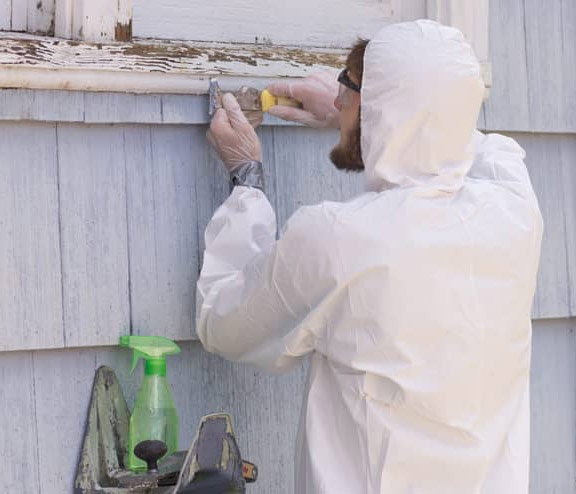Comprehensive Guide on Effective Lead Violation Removal Methods
In the world of ecological safety, dealing with lead infractions demands a careful and organized strategy. This comprehensive guide begins by highlighting the crucial preliminary steps of determining lead dangers with sophisticated analysis and screening techniques. Methods such as XRF evaluation and dirt wipe sampling are important in identifying contamination sources. The overview clarifies on the value of adhering to stringent safety procedures during the elimination procedure, consisting of the usage of appropriate PPE and isolating affected locations. The succeeding sections promise to review post-removal confirmation and precautionary techniques, ensuring lasting security and compliance. Discover the intricate information that make these methods not just reliable however important.
Recognizing Lead Risks
Recognizing lead threats is a crucial very first step in alleviating the dangers linked with lead direct exposure. Lead, a poisonous metal, can be present in various environmental mediums, including paint, soil, water, and dust.
The initial phase in identifying lead hazards involves understanding common lead sources within the built environment. Frameworks constructed prior to 1978 are specifically at risk as a result of the widespread use of lead-based paint during that period. Additionally, soil contamination can take place from wearing away outside paint, commercial emissions, or historical use leaded gas.
An additional considerable resource is lead piping and pipes components, which can seep introduce alcohol consumption water. Consumer goods such as toys, porcelains, and imported items may also contain harmful lead degrees. Especially, work-related atmospheres and hobbies involving lead can track impurities into homes.
Assessment and Screening
When resolving lead risks, reliable evaluation and screening are critical. First assessment normally involves an aesthetic inspection to determine possible lead sources, such as degrading paint or infected dirt.

Dirt wipe sampling is one more essential technique, particularly in property setups. By accumulating samples from floors, windowsills, and other surfaces, this technique gives understandings right into potential exposure risks. Dirt screening around structure borders is crucial to detect lead contamination that could pose risks, especially to children.
Safe Removal Procedures
Upon finishing thorough assessment and screening, applying secure elimination treatments is the following important phase in addressing lead threats. This process ensures that lead-contaminated products are properly and securely eliminated, reducing danger to both workers and homeowners. The initial step entails separating the afflicted area utilizing plastic sheeting and correct securing techniques to avoid the spread of lead dirt.
Employees must put on ideal personal protective devices (PPE), consisting of respirators, gloves, and look what i found non reusable coveralls, to alleviate direct exposure. Employing specialized devices and wet approaches, such as damp sanding or using HEPA-filtered find out here vacuums, reduces the diffusion of lead fragments. It is crucial to avoid completely dry sanding or abrasive blowing up, as these approaches can generate unsafe lead dust.
Waste disposal is one more crucial part; all infected products should be securely nabbed and labeled according to EPA and local guidelines. Additionally, extensive cleansing of the work location with HEPA vacuum cleaners and damp cleaning makes certain the elimination of residual lead fragments.
Post-Removal Verification

Confirmation of effective lead elimination, understood as post-removal confirmation, is vital to guarantee the safety and habitability of the remediated location. This examination makes sure that all well-known sources of lead have actually been resolved and that no visible indicators of contamination remain.
Complying with the aesthetic evaluation, environmental tasting is performed. This involves gathering dirt, soil, and in some cases water samples from the remediated location. Recognized research laboratories evaluate these examples to determine lead degrees, guaranteeing they drop listed below the safety and security limits developed by governing bodies such as the Environmental Security Agency (EPA)
On top of that, air high quality screening might be done to find air-borne lead fragments, especially in cases where substantial lead-based paint elimination or improvement has actually taken place. The results of these tests offer measurable information validating that the lead levels are within permitted limitations.
Ultimately, post-removal verification offers as a crucial checkpoint, validating the effectiveness of the lead abatement initiatives and safeguarding the health of owners and site visitors.
Safety Nets and Upkeep

A vital precautionary measure includes using lead-safe certified specialists for any type of improvement, repair service, or painting activities. These specialists are educated in practices that lessen lead dirt and particles. Additionally, preserving colored surfaces to stay clear of cracking or peeling is crucial, as deteriorating paint can release lead fragments into the setting.
Educational campaigns targeting property owners and tenants pertaining to the risks of lead and the relevance of reporting any kind of possible hazards can additionally improve preventive initiatives. Routine cleaning utilizing HEPA vacuums Web Site and wet mopping techniques can considerably minimize lead dirt accumulation.
Final Thought
In recap, effective lead infraction elimination requires a precise method including extensive assessment, exact screening, and rigid removal procedures. Ensuring safety and security with correct seclusion and individual safety devices remains paramount. Post-removal verification via environmental sampling and air quality screening confirms conformity with established security criteria. In addition, continuous evaluations and upkeep are important to reduce future lead hazards, consequently protecting public wellness and making sure sustained conformity with regulative requirements.